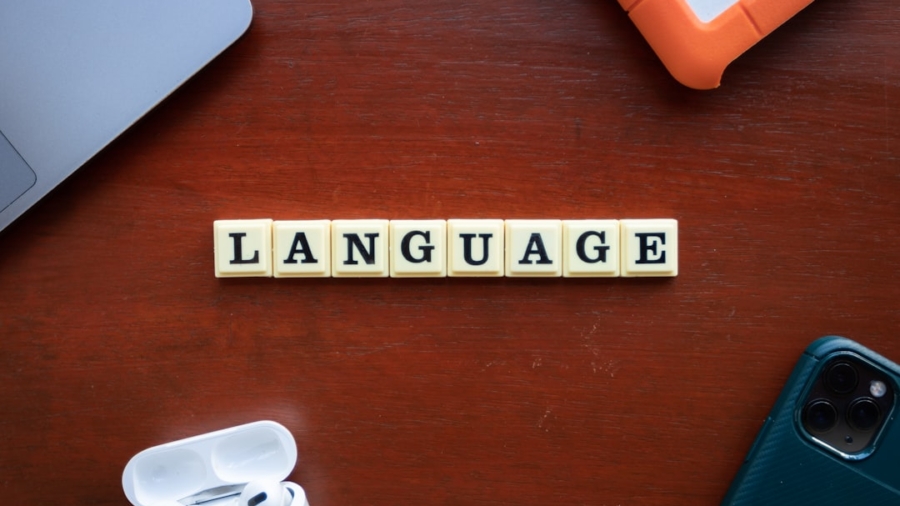The advent of artificial intelligence (AI) has revolutionized numerous fields, and language learning is no exception. AI tools have emerged as powerful allies for learners, offering personalized experiences that traditional methods often lack. These tools leverage advanced algorithms and machine learning techniques to adapt to individual learning styles, preferences, and paces.
From chatbots that simulate real-life conversations to applications that provide instant feedback on pronunciation, AI is reshaping how we acquire new languages. The integration of AI into language learning not only enhances engagement but also fosters a more immersive and interactive environment. As the global landscape becomes increasingly interconnected, the demand for language proficiency continues to rise.
Whether for travel, business, or cultural exchange, the ability to communicate in multiple languages is a valuable asset. AI tools cater to this need by providing learners with resources that are accessible anytime and anywhere. This flexibility allows users to practice at their convenience, making language learning more manageable and less intimidating.
With the right AI tools, learners can embark on their linguistic journeys with confidence, equipped with resources that are tailored to their unique needs.
Key Takeaways
- AI tools can greatly enhance language learning by providing personalized and interactive experiences.
- When choosing an AI tool for language learning, consider factors such as your learning goals, preferred learning style, and budget.
- Incorporating AI tools into your language learning routine can be done through regular practice, setting specific goals, and utilizing the tool’s features effectively.
- To maximize the benefits of AI tools for language learning, take advantage of features such as speech recognition, personalized feedback, and adaptive learning algorithms.
- Challenges in using AI tools for language learning can be overcome by staying motivated, seeking help from online communities, and utilizing additional resources for support.
Choosing the Right AI Tool for Your Language Learning Needs
Selecting the appropriate AI tool for language learning can be a daunting task given the plethora of options available. Each tool comes with its own set of features, strengths, and weaknesses, making it essential for learners to assess their specific needs before making a choice. For instance, some learners may prioritize vocabulary acquisition, while others might focus on conversational skills or grammar mastery.
Identifying personal goals is crucial in narrowing down the options and finding a tool that aligns with those objectives. When evaluating AI tools, it is important to consider factors such as user interface, accessibility, and the range of languages offered. Some platforms may excel in providing interactive speaking exercises, while others might focus on reading comprehension or writing skills.
Additionally, learners should look for tools that incorporate gamification elements, as these can enhance motivation and make the learning process more enjoyable. Reading user reviews and exploring trial versions can also provide valuable insights into how well a tool meets individual learning preferences.
Incorporating AI Tools into Your Language Learning Routine

Integrating AI tools into a language learning routine requires thoughtful planning and consistency. To maximize the effectiveness of these tools, learners should establish a structured schedule that incorporates regular practice sessions. For example, dedicating specific time slots each day for using an AI language app can help create a habit that reinforces learning.
This routine could include a mix of activities such as vocabulary drills, pronunciation practice, and interactive conversations with AI chatbots. Moreover, it is beneficial to complement AI tools with other language learning methods. While AI can provide instant feedback and personalized exercises, traditional resources like textbooks or language exchange meetups can offer additional context and cultural insights.
By blending various approaches, learners can create a more holistic experience that addresses different aspects of language acquisition. This multifaceted strategy not only enhances retention but also keeps the learning process dynamic and engaging.
Maximizing the Benefits of AI Tools for Language Learning
To fully harness the potential of AI tools in language learning, users must actively engage with the technology rather than passively consume content. This means taking advantage of features such as speech recognition and adaptive learning algorithms that adjust difficulty levels based on performance. For instance, many AI-driven platforms analyze user responses to tailor exercises that target specific weaknesses, ensuring that learners are consistently challenged without feeling overwhelmed.
Additionally, setting clear goals can significantly enhance the effectiveness of AI tools. By defining short-term and long-term objectives—such as mastering a certain number of vocabulary words each week or achieving conversational fluency within a specific timeframe—learners can maintain focus and motivation. Many AI tools offer progress tracking features that allow users to visualize their achievements over time, providing a sense of accomplishment that can further drive engagement.
Overcoming Challenges in Using AI Tools for Language Learning
Despite their many advantages, using AI tools for language learning is not without challenges. One common issue is the potential for over-reliance on technology, which can lead to gaps in foundational knowledge. For example, learners might become adept at using an app for vocabulary drills but struggle with real-life conversations due to a lack of practical experience.
To mitigate this risk, it is essential to balance AI tool usage with real-world practice opportunities, such as speaking with native speakers or participating in language exchange programs. Another challenge is the variability in the quality of AI tools available on the market. Not all applications are created equal; some may lack comprehensive content or fail to provide accurate feedback.
To navigate this landscape effectively, learners should conduct thorough research before committing to a particular tool. Engaging with online communities or forums dedicated to language learning can also provide insights into which tools are most effective and user-friendly.
Tracking Your Progress with AI Tools

One of the standout features of many AI language learning tools is their ability to track user progress over time. This functionality not only helps learners stay accountable but also provides valuable insights into areas that require further attention. For instance, many applications offer detailed analytics on vocabulary retention rates, speaking fluency scores, and grammar accuracy.
By regularly reviewing this data, learners can identify patterns in their performance and adjust their study strategies accordingly. Moreover, progress tracking can serve as a motivational tool. Many platforms incorporate gamification elements such as badges or rewards for achieving milestones, which can encourage users to remain committed to their learning journey.
Celebrating small victories—like completing a level or mastering a set of vocabulary—can boost confidence and reinforce positive habits. This continuous feedback loop fosters an environment where learners feel empowered to take ownership of their education.
Customizing AI Tools to Fit Your Language Learning Goals
Customization is a key advantage of many AI language learning tools. Users often have the ability to tailor their learning experiences based on personal preferences and goals. For example, some platforms allow learners to select specific topics or themes they wish to focus on, such as travel-related vocabulary or business communication skills.
This level of personalization ensures that learners remain engaged with content that resonates with their interests and needs. Additionally, many AI tools offer adjustable difficulty levels that cater to varying proficiency stages. Beginners may benefit from foundational exercises that emphasize basic vocabulary and grammar rules, while advanced learners might seek out complex texts or nuanced conversational scenarios.
By customizing their learning paths, users can ensure that they are consistently challenged while also building confidence in their abilities.
Future Trends in AI Tools for Language Learning
The future of AI tools in language learning promises exciting developments driven by advancements in technology and pedagogy. One emerging trend is the integration of augmented reality (AR) and virtual reality (VR) into language learning experiences. These technologies have the potential to create immersive environments where learners can practice speaking in realistic scenarios—such as ordering food in a restaurant or navigating public transportation—without leaving their homes.
Furthermore, advancements in natural language processing (NLP) are likely to enhance the conversational capabilities of AI chatbots.
This evolution could lead to improved fluency and confidence when engaging with native speakers.
In addition to these technological innovations, there is a growing emphasis on incorporating cultural elements into language learning through AI tools. Understanding cultural context is crucial for effective communication; therefore, future applications may include features that expose learners to idiomatic expressions, cultural norms, and regional dialects. By fostering cultural awareness alongside linguistic skills, these tools will prepare learners for more meaningful interactions in diverse settings.
As we look ahead, it is clear that AI will continue to play a transformative role in language education. The ongoing development of these tools will not only enhance accessibility but also create richer and more engaging learning experiences for individuals around the globe.
For those interested in exploring how technology can aid in educational pursuits, a related article worth reading is Best Software for Literature Review. This article delves into various software options that can streamline the process of conducting literature reviews, showcasing how digital tools can support academic and research activities. By understanding the capabilities of these tools, learners can better appreciate the role of technology in facilitating efficient and effective learning processes.
FAQs
What are AI tools for language learning?
AI tools for language learning are software programs or applications that use artificial intelligence technology to help users improve their language skills. These tools often include features such as personalized learning plans, interactive exercises, and real-time feedback.
How do AI tools for language learning work?
AI tools for language learning work by using machine learning algorithms to analyze user input, provide personalized recommendations, and track progress over time. These tools can also incorporate natural language processing to understand and respond to user interactions.
What are the benefits of using AI tools for language learning?
Some benefits of using AI tools for language learning include personalized learning experiences, real-time feedback, access to a wide range of resources, and the ability to practice language skills in a variety of contexts. These tools can also adapt to individual learning styles and pace.
What are some popular AI tools for language learning?
Some popular AI tools for language learning include Duolingo, Babbel, Rosetta Stone, and Lingodeer. These tools offer a range of features such as interactive lessons, speech recognition, and gamified learning experiences.
Are AI tools for language learning effective?
Research has shown that AI tools for language learning can be effective in helping users improve their language skills. However, the effectiveness of these tools can vary depending on individual learning styles, motivation, and the amount of time dedicated to practice.

